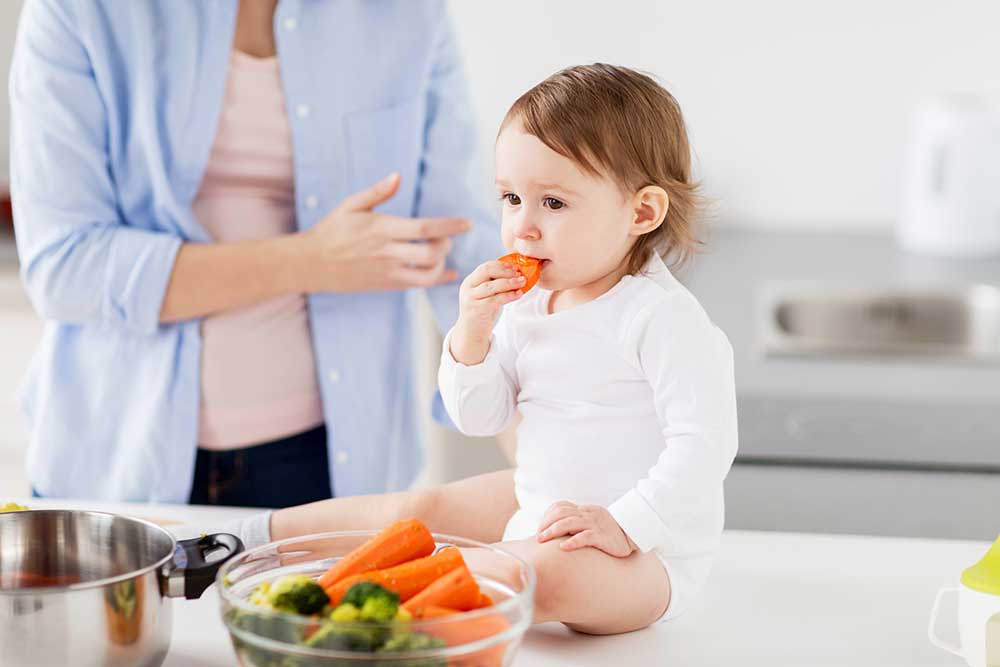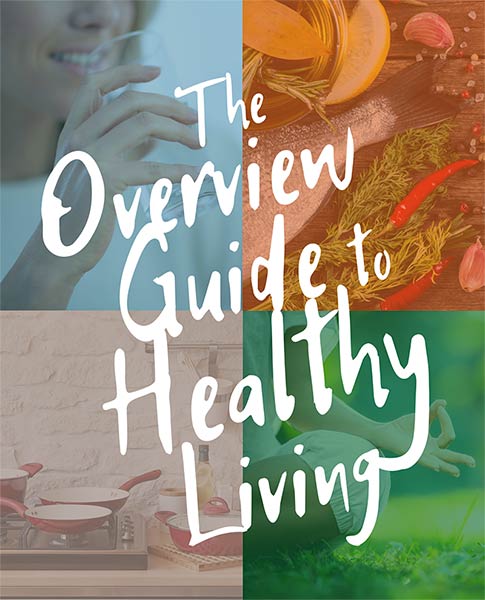Introducing solid foods to your baby is a momentous occasion, marking a crucial stage in their development. Baby-led weaning (BLW) is a popular approach that encourages self-feeding, allowing infants to explore and enjoy a variety of tastes and textures from an early age.
You Can Buy the Full Copy of My New Book “Nurturing: A Comprehensive Guide to Introducing Solid Foods for Optimal Infant Development” Here!
Understanding Baby-Led Weaning
Baby-led weaning, a term coined by Gill Rapley in 2005, is gaining popularity as a method of introducing solid foods to infants. Rapley, a midwife in the UK, defines baby-led weaning as allowing infants to self-feed appropriately sized whole pieces of food from around six months of age. This approach puts babies in control of what, how much, and how quickly they eat, emphasizing graspable foods they can pick up and hold.
What Are the Benefits of Baby-Led Weaning?
The benefits of baby-led weaning (BLW) are manifold. BLW exposes babies to a wider variety of flavors and textures earlier than traditional purée-fed babies, promoting the development of essential oral motor skills. When done correctly, BLW allows babies to control their food intake, reducing the risk of overeating or undereating. Mealtime experiences become pleasant, as babies can actively participate in the feeding process.
Practical Tips for Successful Baby-Led Weaning:
- Set Up a Successful Feeding Environment:
- Sit and eat with your baby during mealtimes to serve as a role model.
- Ensure safe seating, with babies sitting completely upright for effective feeding.
- Let Baby Lead the Way:
- Be responsive to baby’s cues and encourage self-feeding.
- Embrace the mess and allow babies to explore food using all their senses.
- Offer Appropriate Foods:
- Use the squish test to determine if a food is safe for the baby.
- Advance babies in textures to expose them to a variety of flavors and shapes.
- Learn the Difference Between Gagging and Choking:
- Recognize the signs of choking and differentiate them from normal gagging.
- Get comfortable with gagging as a natural part of the learning process.
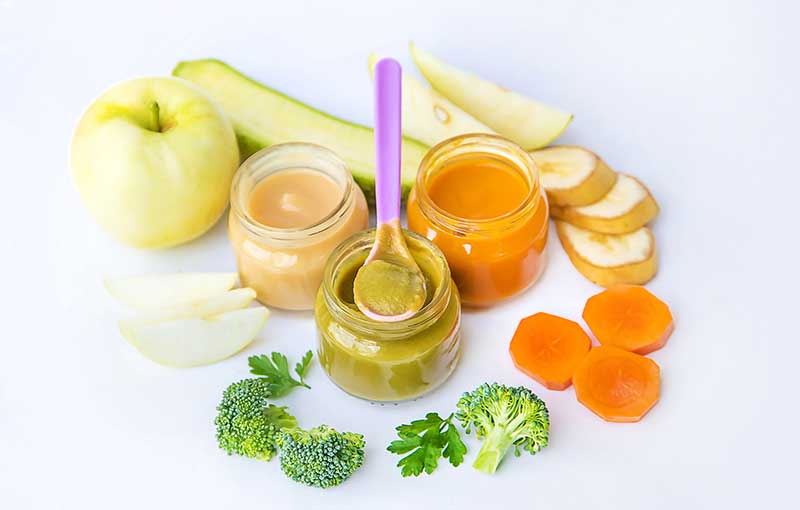
Here are three easy baby-led weaning recipes that are nutritious and suitable for introducing solid foods to your baby:
- Avocado and Banana Mash:
- Ingredients:
- 1 ripe avocado
- 1 ripe banana
- Instructions:
- Ingredients:
- Peel and pit the avocado.
- Mash the avocado and banana together until you achieve a smooth consistency.
- Serve in small, baby-friendly portions.
This recipe introduces healthy fats from avocado and natural sweetness from banana, providing a good mix of nutrients.
- Sweet Potato Fingers:
- Ingredients:
- 1 sweet potato
- Instructions:
- Preheat the oven to 375°F (190°C).
- Peel the sweet potato and cut it into finger-sized sticks.
- Place the sweet potato sticks on a baking sheet.
- Bake for 15-20 minutes or until the sweet potato is tender.
- Allow it to cool before serving.
Sweet potatoes are rich in vitamins and minerals, and the finger shape makes it easy for your baby to grasp.
- Oatmeal Pancakes:
- Ingredients:
- 1/2 cup rolled oats
- 1/2 ripe banana, mashed
- 1/2 cup milk (breast milk, formula, or cow’s milk)
- 1 egg
- Instructions:
- In a blender, combine oats, mashed banana, milk, and egg. Blend until smooth.
- Heat a non-stick pan over medium heat.
- Pour small amounts of batter onto the pan to form mini pancakes.
- Cook for 1-2 minutes on each side or until golden brown.
- Cool and cut into bite-sized pieces.
These oatmeal pancakes offer a soft texture and are a great way to introduce oats and bananas to your baby.
Remember to always adapt recipes based on your baby’s age and chewing abilities. Supervising your baby while eating is essential, as is ensuring the food is cut into appropriate sizes to prevent choking hazards. If introducing allergenic foods, follow your pediatrician’s advice and introduce one new ingredient at a time, waiting a few days before introducing another.
Safety Measures and Best Practices:
- Supervision is Key: Always supervise your baby during meals. This ensures their safety and allows you to observe their eating habits and preferences.
- Minimize Choking Hazards: Cut foods into manageable pieces to minimize choking hazards. Avoid small, hard, or round foods that could pose a risk.
- Encourage Proper Chewing: Help your baby develop proper chewing skills by offering age-appropriate textures. This can reduce the risk of choking and promote healthy eating habits.
By following these tips and embracing the baby-led feeding approach, parents can make the introduction of solid foods a positive and enjoyable experience for themselves and their little ones. Remember, the goal is to foster a lifelong love for diverse and nutritious foods while ensuring a safe and developmentally appropriate feeding journey.
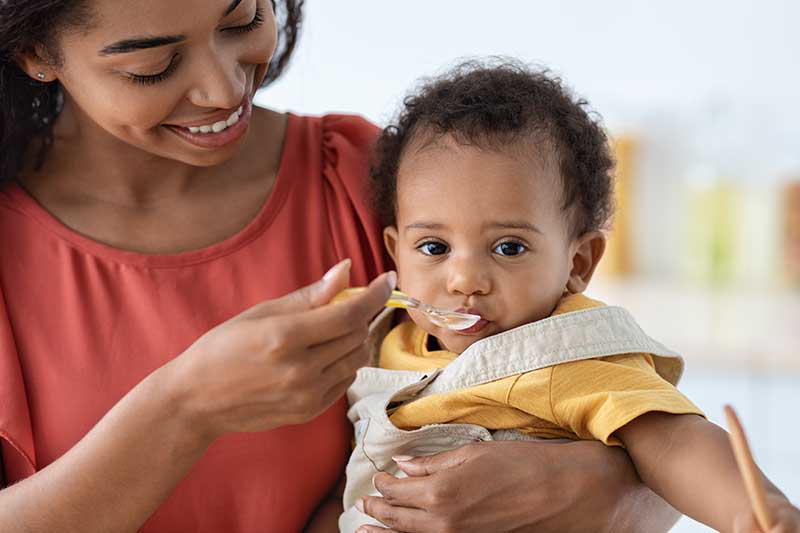
FAQs Related to Baby-Led Weaning
- When can my baby start baby-led weaning?
- Your baby should be at least 6 months old.
- The tongue thrust instinct should be lost (usually around 6 months).
- The baby should sit up independently for 60 seconds and show eagerness to eat.
- Follow your baby’s developmental readiness, as recommended by the American Academy of Pediatrics. Breastmilk or formula is sufficient until around 6 months.
- Does baby-led weaning increase choking risk?
- No, according to the BLISS study.
- Introducing various textures through baby-led weaning helps babies become skilled eaters, reducing the likelihood of gagging or choking.
- How long does baby-led weaning take?
- On average, it may take 2-3 weeks to notice solid food in your baby’s stool.
- Begin with one meal per day around 6 months, progress to three meals by 9 months, and reach three meals plus snacks by one year.
- What if my baby spits food or doesn’t want to eat it?
- Persistence is key. If your baby spits out or pushes away food, continue offering it.
- Preferences take time to develop, and it may require several attempts before your baby decides on likes and dislikes.
- How do I know if my baby has eaten enough?
- Your baby will lose interest in eating when satisfied.
- Monitor alertness, wet diapers, bowel movements, developmental skills, and steady growth.
- If concerned, consult your pediatrician or a registered dietitian for personalized guidance.
Buy the Full Copy of My New Book “Nurturing: A Comprehensive Guide to Introducing Solid Foods for Optimal Infant Development” Here!
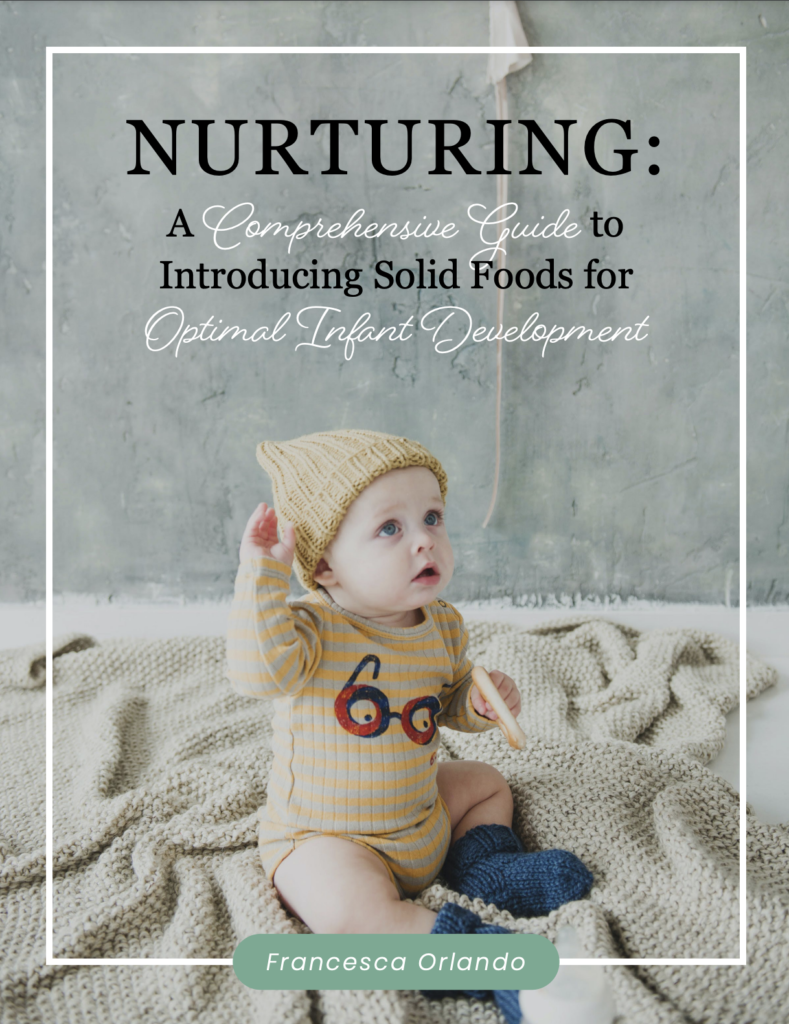
References
- D’Auria, E., Bergamini, M., Staiano, A., Banderali, G., Pendezza, E., Penagini, F., … & Peroni, D. G. Baby-led weaning: what a systematic review of the literature adds on. Italian journal of pediatrics, 44(1), 1-11, 2018.
- Rapley Weaning. http://www.rapleyweaning.com/assets/Defining_BLW_v2.pdf
